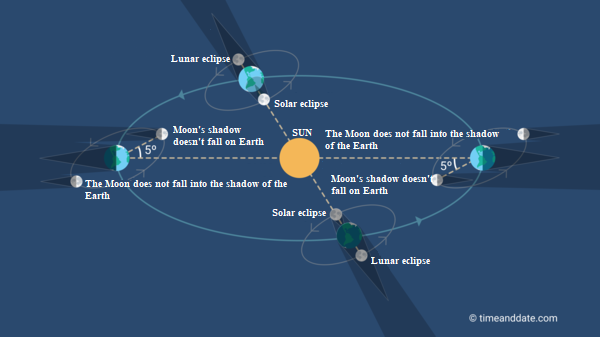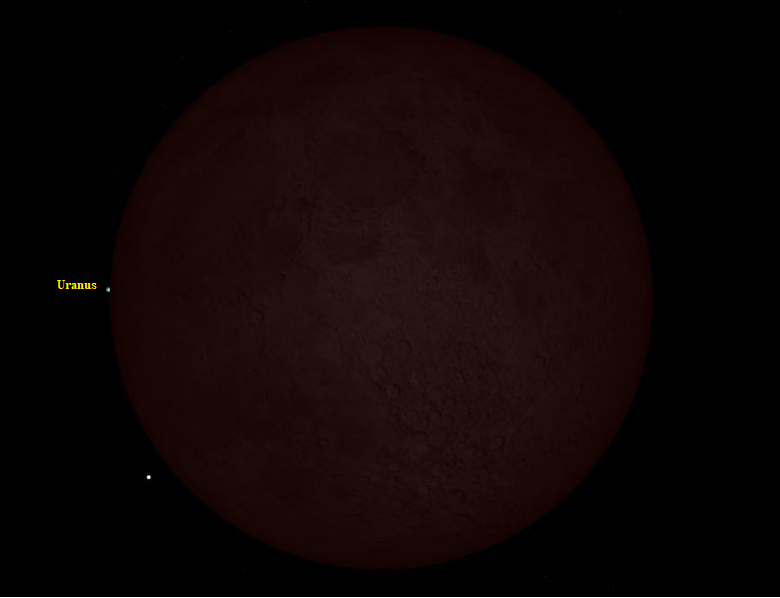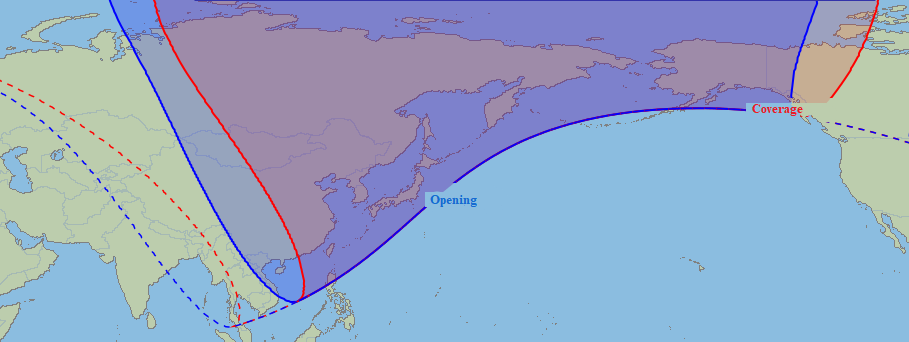Moving along the celestial sphere, the Moon constantly obscures more or less bright stars from ground observers. This also happens during total lunar eclipses, which occur up to three times a year (usually less often). There are significantly fewer planets in the sky than there are stars — there are only seven of them. It is not difficult to understand how unlikely it will be for one of them to disappear behind the disk of our natural moon, when it is also in the earth’s shadow. But that’s exactly what will happen on November 8, 2022, when the darkened Moon closes Uranus.
Many interesting and picturesque phenomena in the Solar System occur when three or more of its objects are on the same straight line, or, more precisely, as close as possible to it. For example, the configuration when a planet passes near a straight line connecting the centers of the Sun and the Earth is called its opposition. It can include five so-called outer planets — Mars, Jupiter, Saturn, Uranus and Neptune. The Moon also has its own “opposition”. It comes every month and is called a full moon.
It would seem that every full moon our natural moon should “visit” the earth’s shadow, and we would observe a lunar eclipse. But in fact, its orbit is inclined to the ecliptic — the plane of the Earth’s orbit — by more than 4°, so usually the Moon passes south or north of the shadow cone without falling into it. Darkening occurs when the full moon occurs near the so-called node line — a straight line along which the earth and lunar orbits intersect. During the new moon phase in such conditions, we see an eclipse of the Sun.

The line of nodes does not have a fixed position in space: under the influence of gravity of other celestial bodies, it gradually turns, making a complete rotation in about 18 years towards the orbital motion of the Moon. This period is almost equal to the famous saros — the period of time after which lunar and solar eclipses are repeated in similar conditions, but not on the same date, but 10-11 days later.
Under what conditions can the Moon cover the planet during a lunar eclipse? It is easy to understand that for this, firstly, the dates of the eclipse and the opposition of the planet should be as close as possible. The difference of more than a day already leads to a critical “miss”, and in the case of Mars moving along the celestial sphere fast enough, it cannot exceed several hours.
Secondly, the opposition of the planet should occur as close as possible to the ecliptic. The maximum possible angular radius of the earth’s shadow is slightly more than ¾ degrees (usually less), therefore, this may be the maximum allowable deviation. There is only one large planet moving away from the ecliptic by about the same amount — this is Uranus with an orbital inclination of 0.773° (46.4’). It is it that has the most chances to “hide” behind the Moon during a lunar eclipse.

The proportionality of the period of rotation of the line of nodes of the Moon’s orbit and the orbital period of Uranus (84.3 years) leads to the fact that its occultations during lunar eclipses occur in pairs separated by a period of 76 years. In the XX century, this phenomenon took place in 1930 and 1938, after that it was repeated in 2014, when it could be seen only in the north of the Far East, and now we can witness the second “darkened coverage”, after which a long break will come again.

However, in the dark sky from beginning to end, a rare occultation will be observed only in Mongolia, China (except its western part), Japan, northern Vietnam, the east Asian part of the Russian Federation, as well as Alaska. In the evening twilight, this phenomenon will be seen by residents of Thailand, Cambodia, Laos, Myanmar, Bangladesh, Nepal, Bhutan, Kyrgyzstan, Tajikistan, northeast India, Eastern Kazakhstan and in the north of Western Siberia. Uranus will look like a pale greenish “pea” with a brilliance of 5.6ᵐ and a diameter of 3.7 arcseconds, on which a giant disk of a darkened Moon with a diameter of 30’35”, that is, 490 times larger, will “crawl”. In fact, the average diameter of Uranus is 14.6 times that of the Moon, but during an eclipse this planet will be located 7110 times farther from us than our natural moon.

The maximum of the eclipse will occur on November 8 at 10:59 a.m. world time (12:59 a.m. Kyiv time), and on November 9 at the 8th hour Uranus will be in opposition to the Sun, that is, closest to the straight line passing through the centers of the Earth and our luminary. This will be the fourth and penultimate opposition of the big planet this year. Previously, Saturn, Neptune and Jupiter passed a similar configuration, and Mars will be the last to pass — this will happen on December 8. On the same day, it will be covered by the Moon (though not darkened).
Unfortunately, in the future, the frequency of “eclipsed occultations” of Uranus will be disrupted, and we will see the next such event only in the XXII century. As for the other large outer planets, the situation with them is even more complicated. The inclinations of their orbits to the earth lie in the range from 1.3° at Jupiter to 2.5° at Saturn. To be in the band of the celestial sphere, along which the earth’s shadow “travels”, they need to get as close as possible to their own node lines, along which their orbits intersect with the ecliptic. The probability that a lunar eclipse will also occur during such a “nodal opposition” is extremely small, therefore such occultations occur once in several centuries. The closest of these will be the covering of Saturn’s Moon during the total eclipse on July 26, 2344.
Follow us on Twitter to get the most interesting space news in time
https://twitter.com/ust_magazine
